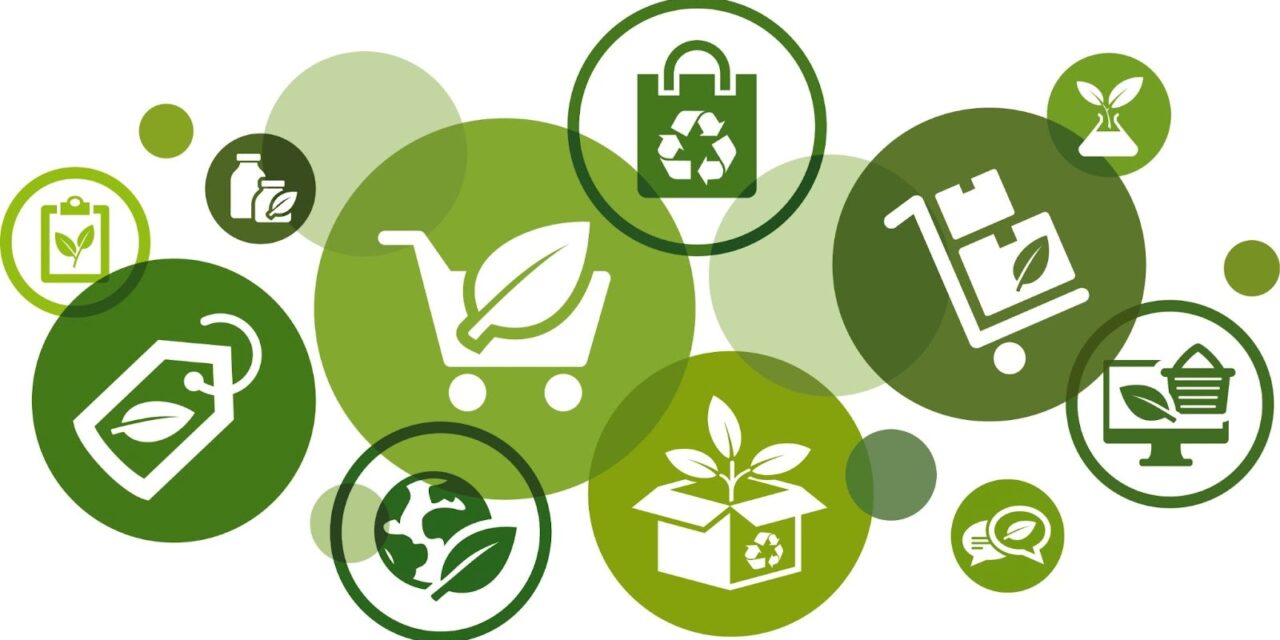Sustainable procurement is gaining popularity as people prioritize environmental concerns, social responsibility, and ethical practices in today’s global discussions. Companies are recognizing the significance of using procurement practices that align with present business requirements. These practices also contribute to building a sustainable and resilient future. This blog post will discuss the important aspects of sustainable procurement. These aspects are crucial for obtaining goods and services in a responsible and ethical manner.
Pillar 1: Environmental Responsibility
At the heart of sustainable procurement lies a commitment to environmental responsibility. Organizations are now more than ever aware of the impact their procurement activities can have on the environment. This pillar aims to lessen the environmental impact of the entire supply chain, from sourcing materials to disposing of products.
Sustainable procurement seeks to minimize resource depletion, reduce energy consumption, and limit greenhouse gas emissions. Life cycle assessments and eco-labeling are important for transparency and accountability in sourcing practices. By prioritizing environmental responsibility, organizations not only contribute to global sustainability efforts but also position themselves as leaders in green procurement practices.
Incorporating sustainable materials into the procurement process is a key strategy within this pillar. Organizations can explore alternatives such as recycled materials, responsibly sourced wood, and biodegradable packaging. Embracing renewable energy sources for manufacturing processes and transportation is another critical aspect. By adopting these practices, organizations not only fulfill their environmental responsibilities but also create a positive impact on the overall ecosystem.
Pillar 2: Social Equity and Inclusivity
Sustainable procurement extends beyond environmental considerations to embrace social equity and inclusivity. This pillar emphasizes fair labor practices, human rights, and diversity in the supply chain. Companies are checking suppliers to make sure workers are treated well, paid fairly, and have safe working conditions.
By prioritizing social responsibility, sustainable procurement becomes a force for positive change, uplifting communities and fostering inclusive economic growth. This pillar is about more than just following rules. It also involves finding suppliers who care about fairness. This focus on fairness has a positive impact that goes beyond just the business deal.
One way organizations can enhance inclusivity is by engaging with suppliers from underrepresented groups or regions. Supporting businesses owned by minorities, women, or those from developing nations contributes to a more equitable distribution of economic opportunities. This not only aligns with social responsibility but also strengthens the overall fabric of the global supply chain.
Pillar 3: Economic Viability and Long-Term Relationships
While environmental and social considerations are crucial, economic viability remains a fundamental pillar of sustainable procurement. Organizations must strike a balance between cost-effectiveness and responsible sourcing. This involves evaluating the total cost of ownership, considering factors such as environmental impact and social responsibility alongside traditional financial metrics.
Moreover, sustainable procurement encourages the development of long-term relationships with suppliers, fostering collaboration and innovation for mutual benefit. This pillar helps the supply chain be more environmentally friendly, from getting materials to disposing of products. Organizations can create a sustainable procurement system by building trust and shared values. This system will withstand market changes and support the long-term economic viability of all stakeholders.
In the pursuit of economic viability, organizations can explore innovative financing models that support sustainable initiatives. This includes exploring partnerships with financial institutions that offer preferential terms for environmentally friendly projects. Additionally, adopting circular economy principles, such as product reuse and recycling programs, can contribute to long-term cost savings and resource efficiency.
Pillar 4: Ethical and Transparent Governance
Transparency and ethical governance form the fourth pillar of sustainable procurement. Organizations committed to sustainable procurement prioritize transparency in their sourcing processes, sharing information about their supply chain, supplier practices, and performance. Ethical governance ensures that procurement decisions align with the organization’s values and ethical standards.
This pillar also involves implementing robust systems for monitoring and auditing suppliers, ensuring compliance with ethical and sustainability criteria. Organizations build trust with consumers and promote ethical behavior in their industry by openly sharing their sourcing practices. This transparency can inspire other players to do the same.
Ethical governance can be further strengthened by actively engaging with stakeholders in the decision-making process. This includes collaborating with non-governmental organizations, industry experts, and even consumers to gather insights and feedback on procurement practices. This method improves transparency and considers the ethical concerns of different stakeholders.
Pillar 5: Innovation and Technology Integration
In a rapidly evolving global landscape, the integration of innovation and technology is a crucial pillar of sustainable procurement. Leveraging cutting-edge technologies, such as blockchain and artificial intelligence, can enhance transparency, traceability, and efficiency in supply chain processes.
Innovation also plays a pivotal role in developing sustainable alternatives, reducing the environmental impact of products, and driving positive change across industries. Using new technology helps organizations improve procurement and promote sustainability in the supply chain.
Blockchain can make supply chains transparent and traceable, ensuring ethical and sustainable sourcing of products. Artificial intelligence can be employed to analyze vast amounts of data, helping organizations identify opportunities for resource optimization and waste reduction. Embracing such technological advancements positions organizations as leaders in sustainable procurement while also driving innovation within their respective industries.
Pillar 6: Risk Management and Resilience
Sustainable procurement recognizes the importance of risk management and resilience in the face of global uncertainties. This pillar involves identifying and mitigating risks associated with the supply chain, such as geopolitical instability, climate change, and economic fluctuations.
By building resilience into procurement strategies, organizations can adapt to unforeseen challenges, ensuring the continuity of their operations while maintaining a commitment to sustainability. This pillar focuses on planning ahead and being prepared for challenges while still following sustainable and responsible procurement practices.
One way organizations can enhance resilience is by diversifying their supplier base. Relying on a single source for critical materials or components can expose organizations to significant risks. By using multiple suppliers and sourcing materials strategically, organizations can reduce disruptions and create a stronger supply chain.
Pillar 7: Collaboration and Stakeholder Engagement
Collaboration and stakeholder engagement form the final pillar of sustainable procurement. Organizations recognize that achieving sustainability goals requires collaboration with suppliers, customers, and other stakeholders. Engaging with stakeholders fosters a shared commitment to sustainability, driving collective efforts towards positive environmental and social impact.
Collaboration also enables the exchange of best practices, knowledge, and resources, contributing to the continuous improvement of sustainable procurement initiatives. Organizations can engage stakeholders in decision-making to gain diverse perspectives. This helps ensure that their sustainable procurement efforts take into account both society and the environment.
For instance, collaborating with suppliers on joint sustainability initiatives can create a ripple effect throughout the supply chain. This could involve setting common sustainability goals, sharing best practices, and collectively addressing challenges. Engaging with consumers through transparent communication about sustainability efforts not only builds trust but also educates and inspires environmentally conscious consumer behavior.
Conclusion:
In conclusion, these pillars collectively form a robust framework for organizations committed to sustainable procurement. As businesses navigate the complexities of a globalized world, adopting sustainable practices becomes not only a strategic advantage but a moral imperative. Each pillar plays a distinctive role in shaping a procurement strategy that goes beyond immediate business needs, encompassing environmental, social, and economic considerations.
The journey towards sustainable procurement is a dynamic process, demanding continuous adaptation and improvement. By adopting these principles, organizations create opportunities for significant change, both internally and throughout the supply chain system. This commitment is not merely a checkbox for compliance; it is a pledge to contribute positively to the world.
Sustainable procurement is an evolving narrative, where responsible practices become ingrained in the organizational DNA. Businesses can redefine success by considering their impact on the planet and society, not just focusing on financial measures.
Looking ahead, the impact of sustainable procurement extends far beyond the immediate horizon. It shapes a future where ethical considerations, social responsibility, and environmental stewardship are integral to business success. Organizations are incorporating these pillars into their procurement strategies to meet current demands and shape future economic progress.
The legacy of sustainable procurement is one of resilience, innovation, and collaboration. This tradition spreads through supply chains.
It connects with customers. It motivates others in the industry. It creates a global business environment.
In this environment, sustainability is not just an option but a basic principle. Through steadfast commitment and active collaboration, organizations can be architects of change, leaving an enduring legacy of sustainability for future generations to build upon.












